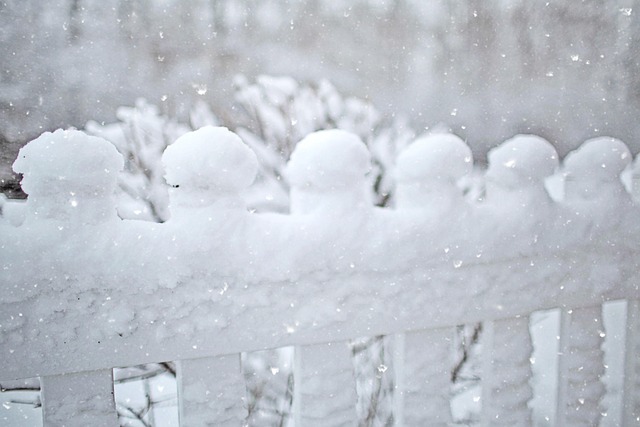Large properties present unique challenges when it comes to fencing, requiring durable, secure solutions that align with budget constraints. This article explores cost-effective fencing options tailored for extensive landscapes, delving into material choices, creative design ideas, installation methods, and maintenance tips. By understanding the key considerations, property owners can make informed decisions, ensuring both functionality and aesthetic appeal without compromising their finances.
- Understanding Large Property Fencing Needs
- Budget-Friendly Materials: Options and Pros
- Creative Design: Cost-Conscious Aesthetics
- DIY vs. Professional Installation: Savings Strategies
- Maintenance Considerations for Longevity
- Legal and Safety Regulations: Navigating Permits
Understanding Large Property Fencing Needs
Fencing a large property presents unique challenges compared to smaller plots. The primary consideration is durability and security, especially in rural or remote areas where properties are spread over vast acres. Fences must withstand harsh weather conditions, potential wildlife encounters, and the constant wear and tear of time.
Additionally, aesthetics play a vital role. Homeowners often seek fences that complement their property’s natural beauty, blending seamlessly with the landscape. This requires a thoughtful design approach, considering height, material, and aesthetic appeal to create both a functional barrier and an attractive addition to the property.
Budget-Friendly Materials: Options and Pros
When considering fencing for large properties on a budget, choosing cost-effective materials can make a significant difference in both your wallet and the final aesthetic. Lucky for you, there are several affordable options that don’t compromise quality or durability. Vinyl is a popular choice due to its low maintenance and long-lasting nature; it’s resistant to rot, rust, and peeling, making it a smart investment. Wood, while slightly pricier than vinyl, can be treated to prevent decay, offering a classic look with regular care.
Metal fencing, particularly wrought iron or galvanized steel, provides robust security without breaking the bank. These materials are highly durable and can withstand harsh weather conditions. Additionally, they offer versatility in design, allowing for intricate patterns that can enhance your property’s curb appeal. Concrete is another budget-friendly option, known for its strength and low maintenance requirements; however, it may require more skilled labor for installation compared to other materials.
Creative Design: Cost-Conscious Aesthetics
When considering fencing for large properties, creative design can offer both visual appeal and cost-conscious aesthetics. Instead of opting for plain, standardized fences, homeowners can explore unique and artistic options that blend functionality with beauty. Incorporating natural materials like wood or locally sourced rocks not only reduces production costs but also adds a rustic charm to the property.
Furthermore, incorporating curved lines, arced gates, or even intricate patterns can transform a simple fence into a striking feature. These creative designs not only enhance the overall look of the property but also provide opportunities for customization, ensuring that the fence aligns with the homeowner’s personal style and budget.
DIY vs. Professional Installation: Savings Strategies
Doing-it-yourself (DIY) fencing installation can be an attractive option for homeowners aiming to save costs, especially for large properties with extensive fence lines. Many people opt for this route due to the perceived financial benefits and control over the project’s outcome. However, it’s essential to weigh the potential savings against the time and effort required. DIY installation might be suitable for smaller, straight-line fences or when enhancing existing structures, but tackling a large property’s fencing needs can be labor-intensive and may result in subpar finishes if not done correctly.
Hiring professional fence installers offers several advantages. While it comes at a cost, hiring experts ensures the job is completed efficiently, with high-quality materials and techniques. Pros can handle complex terrain, custom designs, and structural considerations, ensuring your fence stands the test of time. Additionally, they often have access to discounted materials and equipment, further narrowing the gap between DIY and professional pricing for larger projects.
Maintenance Considerations for Longevity
Regular maintenance is key to ensuring your fencing solution stands the test of time, especially for large properties with extensive perimeters. Unlike traditional fences that may require frequent repairs and heavy-duty upkeep, modern cost-effective options can be designed with low-maintenance in mind. For example, many manufacturers offer fencing made from durable, weather-resistant materials like vinyl or composite, which are easy to clean and resistant to rot, rust, and pest damage.
Annual inspections are recommended to check for any signs of wear and tear, especially in areas prone to extreme weather conditions or heavy foot traffic. Simple tasks such as tightening hinges, replacing worn-out components, and reapplying coatings can extend the life of your fence significantly. Regular maintenance not only keeps your property secure but also maintains its aesthetic appeal, ensuring a sound investment for years to come.
Legal and Safety Regulations: Navigating Permits
When considering fencing solutions for large properties, understanding legal and safety regulations is paramount. Each region has specific guidelines governing fence construction, particularly in terms of height restrictions, materials used, and proximity to public spaces or utilities. Failure to adhere to these regulations can result in penalties, including fines and forced demolition.
Navigating permits efficiently requires thorough research into local building codes and zoning laws. Consult your municipality’s planning department for detailed information on required permits and applications. This process ensures your fencing project complies with all legal requirements, avoiding potential delays or legal complications down the line.
